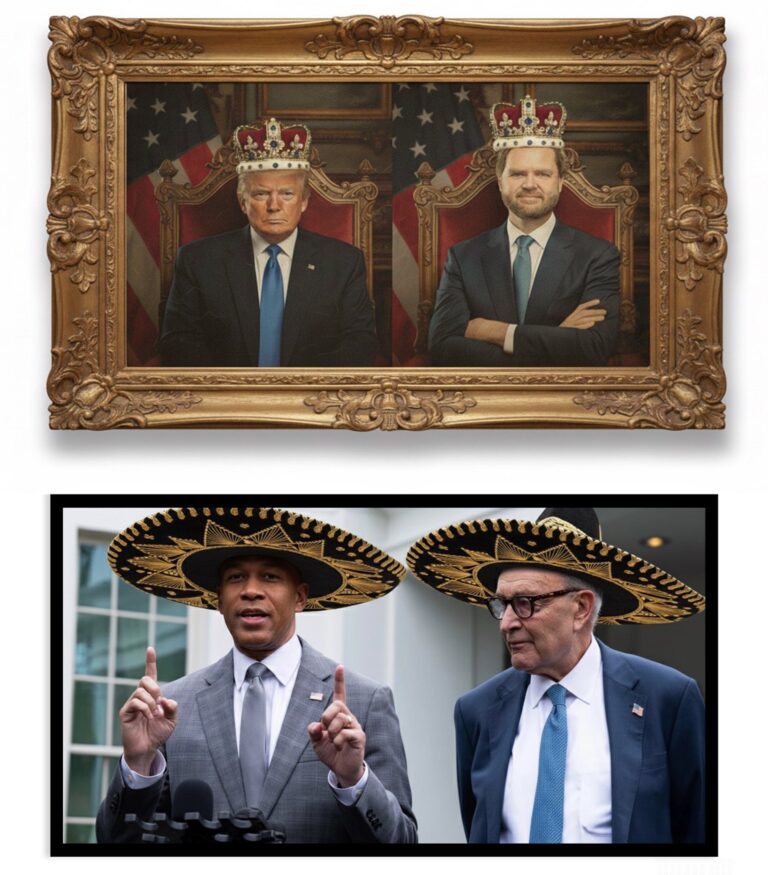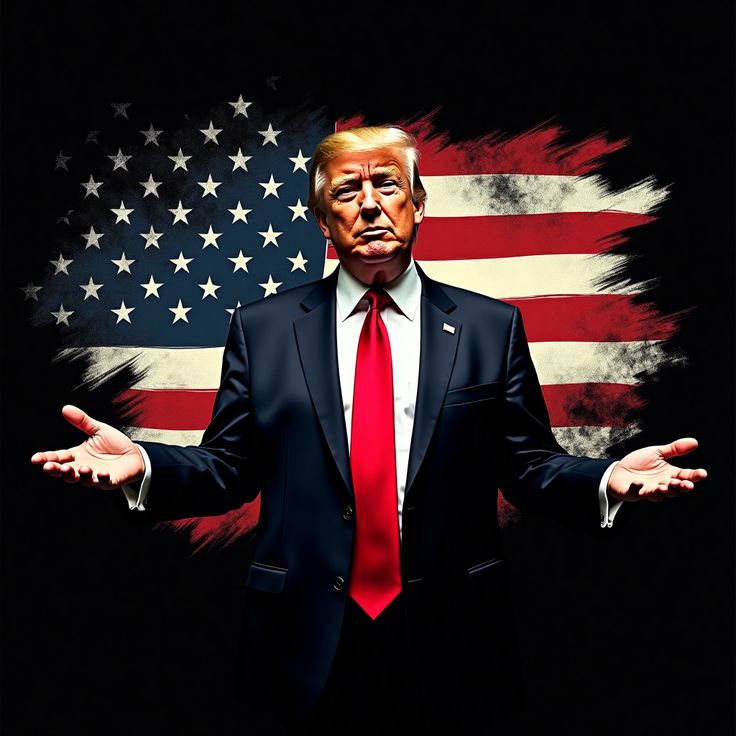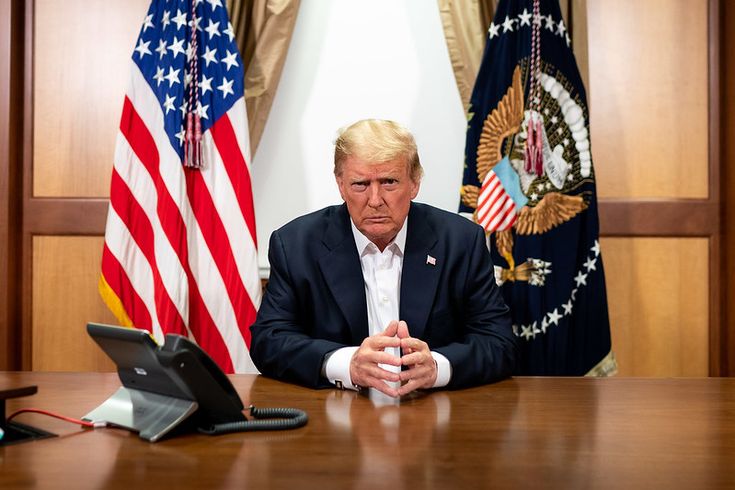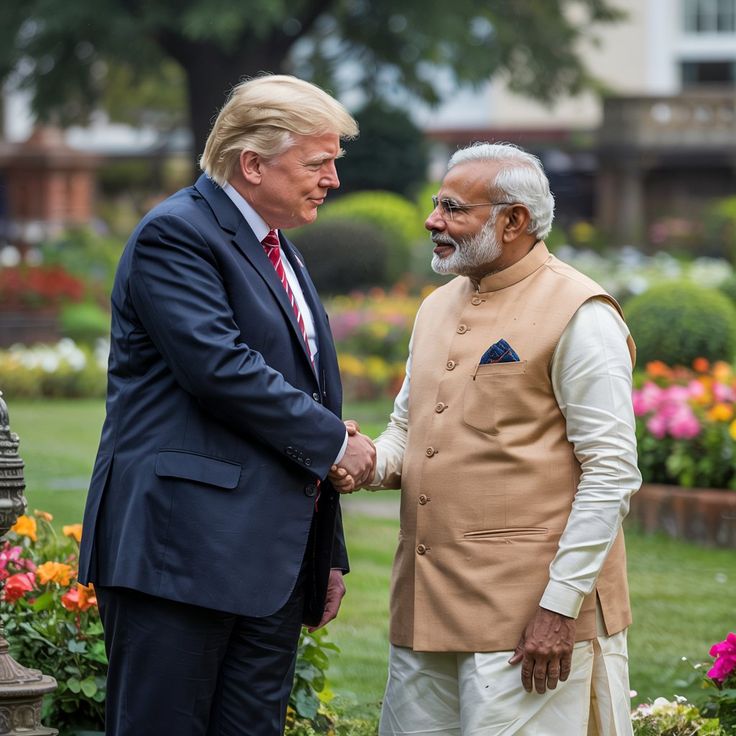Over 2,700 rallies nationwide saw Americans protest against President Trump’s executive overreach and immigration policies — with the President responding through a viral AI-generated video that divided the internet.
A Nationwide Uprising: “We Are Not Ruled by Kings”
On October 18, 2025, the United States witnessed one of the largest coordinated protest movements in recent history. Under the banner “No Kings”, millions of Americans flooded streets across all 50 states, uniting against what they call “executive overreach, erosion of civil liberties, and the rise of authoritarian politics.”
Organizers reported more than 2,700 separate rallies nationwide, from bustling metropolises like New York City, Los Angeles, and Chicago, to small-town gatherings in states such as Maine, Wyoming, and Kansas.
What began as a decentralized social-media campaign in early October turned into a full-blown nationwide movement, drawing participants from a broad spectrum — liberals, moderates, conservatives disillusioned with power concentration, and even former Trump voters.
The protesters’ chant — “No Kings, Just People” — echoed through public squares, courthouse steps, and state capitols, reflecting deep frustration with what many see as the erosion of democratic checks and balances.
“This isn’t about left or right,” said Maria Alvarez, a protester in Houston. “It’s about the idea that no president should behave like a monarch. We fought a revolution for this.”
The Message: Against Executive Overreach and Immigration Crackdowns
While slogans varied, three major themes emerged throughout the rallies:
Executive Overreach: Demonstrators accused President Trump of exceeding his constitutional powers, citing recent executive orders expanding surveillance, limiting press access, and bypassing congressional oversight.
Immigration Policies: Activists condemned the administration’s intensified border enforcement operations and rapid deportation mechanisms, which critics argue violate due process.
Civil Liberties: From journalists to digital-rights advocates, protesters warned of threats to free speech, freedom of the press, and the right to peaceful dissent.
In Washington, D.C., a crowd estimated at 300,000 gathered on the National Mall, waving placards reading “No King in a Republic” and “Constitution, Not Coronation.” Similar scenes unfolded in Los Angeles, where protestors painted massive “No Kings” murals on the streets, and in Chicago, where clergy led a silent march to symbolize moral resistance.
Organizers say the coordinated effort demonstrates a growing appetite for civic engagement — not tied to party affiliation, but to the principle of accountable government.
Mostly Peaceful Rallies, With a Few Flashes of Tension
Despite the scale of the demonstrations, officials across multiple states described the rallies as “overwhelmingly peaceful.” Law-enforcement agencies reported only minor disturbances, a testament to disciplined organizing and cooperation with local authorities.
Still, a handful of isolated incidents made headlines. In New York City, a confrontation broke out between conservative journalist Savanah Hernandez and a protester during a live broadcast. The tense exchange quickly went viral on social media, fueling debate over media bias and the boundaries of press freedom.
Elsewhere, in Portland and Denver, police briefly detained several individuals after curfew violations. However, no significant property damage or violent clashes were reported — a stark contrast to previous years’ politically charged protests.
“We are proud of our protesters,” said Jasmine Reid, a lead coordinator in Chicago. “This was a day of democracy, not destruction.”
Trump’s AI Video Response: “King Trump” Takes Flight
While the streets filled with chants of “No Kings,” President Donald Trump took to Truth Social with a digital counterpunch that instantly set the internet ablaze.
In a 19-second AI-generated video, Trump appeared as “King Trump,” dressed in regal military attire, piloting a fighter jet emblazoned with his name. The clip shows the jet swooping over massive crowds of demonstrators before dumping a torrent of brown sludge on them — including a digitally altered image of activist and social-media personality Harry Sisson.
As the sludge rains down, a triumphant Trump salutes from the cockpit, grinning as the crowd flees.
Supporters hailed the video as “classic Trump humor” and “a playful jab at the opposition.” Within hours, it had amassed millions of views across Truth Social, X (formerly Twitter), and Instagram, with the hashtags #KingTrump and #NoKingsProtests trending simultaneously.
Critics, however, were appalled. Political commentators, civil-rights groups, and Democratic leaders called the post “juvenile,” “inflammatory,” and “dangerous,” arguing that it mocked peaceful dissent and trivialized serious national concerns.
“It’s not funny when the President ridicules citizens for exercising their constitutional rights,” said Democratic strategist Alyssa Turner. “It’s beneath the dignity of the office — and it normalizes authoritarian imagery.”
AI, Satire, and Political Messaging in 2025
The “King Trump” video has reignited discussions about AI-generated political content — and its power to shape narratives. Experts warn that, while clearly satirical, the clip blurs the line between humor and propaganda.
Digital-ethics researcher Dr. Eli Mendez from Georgetown University notes,
“What we’re seeing isn’t just a meme — it’s political performance art using AI. It communicates dominance, mockery, and invincibility, and it spreads faster than any traditional speech.”
The Trump campaign dismissed criticism, insisting the video was “light-hearted entertainment.” Yet, the controversy underscores how AI has become the newest weapon in modern political warfare, capable of amplifying both support and outrage in equal measure.
Media Controversy: Old Footage, New Confusion
As the protests dominated national headlines, several media watchdogs pointed out discrepancies in coverage. Some networks and online outlets were accused of using outdated protest footage from 2017 and 2020, misrepresenting turnout or context.
Fact-checking organizations such as MediaVerify and OpenTruth later confirmed that clips used in viral posts depicting fires and vandalism were, in fact, years old and unrelated to the 2025 rallies.
This revelation added another layer to the polarized media landscape — with Trump supporters accusing mainstream outlets of exaggerating disorder to tarnish the movement, and critics arguing that misinformation downplays the genuine civic energy behind the protests.
“It’s a trust crisis,” said journalist Evan Rodriguez. “People don’t know what’s real anymore — and AI only makes it worse.”
Inside the Movement: Who Are the Protesters?
The “No Kings” movement describes itself as grassroots, non-partisan, and peaceful. Its loose coalition includes student groups, veterans, religious leaders, artists, digital-rights advocates, and former federal employees.
Many wore yellow ribbons or carried signs quoting the U.S. Constitution. Others waved handmade banners reading “We the People Say No to Kings.”
In Los Angeles, actor Mark Ruffalo and singer Billie Eilish were spotted marching alongside crowds, while in Atlanta, prominent faith leaders led interfaith prayers for democracy.
The movement’s official website — NoKings.org — published an open letter declaring:
“Our founding principles reject monarchy. We march not against one man, but against the idea that any leader is above the law.”
Political analysts believe the movement’s appeal lies in its simplicity a clear, emotional message rooted in America’s revolutionary ethos.
Peaceful Power: Protesters Set a New Tone
One of the defining aspects of the “No Kings” demonstrations was their tone of calm defiance. Unlike earlier protests marked by clashes or property damage, this one emphasized peace and civility.
Families attended with children. Churches opened their doors to demonstrators seeking rest and water. Local businesses offered discounts and refreshments to marchers. Across multiple cities, police officers and organizers coordinated in real time to avoid conflicts.
Photos from The Associated Press and Reuters captured thousands kneeling in silence, holding candles as dusk fell — a symbolic gesture of unity and hope.
Even critics of the protests acknowledged the movement’s peaceful conduct. Conservative commentator Ben Shapiro posted, “Disagree with their message, but credit where due — they protested peacefully.”
From the Streets to the Screens: A Divided Public Reaction
By evening, the nation’s attention had shifted from the streets to the screens. Social media was flooded with images, slogans, and heated debate.
- On X, one user wrote, “Millions marching for democracy while the President posts memes mocking them. What a time.”
- Meanwhile, Trump loyalists flooded the same platforms with laughing emojis and memes captioned “Cry Harder, Peasants”, turning the AI clip into a digital symbol of defiance.
- TikTok and Instagram reels showed side-by-side comparisons of the protests and the “King Trump” video — part satire, part shock content. Within 24 hours, engagement on the hashtags surpassed 120 million views, showing how deeply polarized the public has become.
Fact and Fiction Collide: The New Political Reality
The fusion of real-world protest and AI-driven spectacle has left analysts warning that political communication in 2025 may have crossed a threshold.
No longer limited to speeches or press releases, political figures can now project hyper-real versions of themselves — heroic, invincible, and mythic. That power can rally supporters, but it can also distort reality.
“Trump’s video isn’t just humor,” said Dr. Mendez. “It’s a symbol of control a way to say, ‘I’m above it all.’ The fact that it was AI-generated doesn’t make it less powerful; it makes it more so.”
For protesters, though, the takeaway was different. Across message boards and Reddit threads, “No Kings” organizers framed the President’s reaction as proof of the movement’s impact. “He noticed that’s the point,” one post read. “We rattled the throne.”
Political Fallout: What Comes Next
The scale and symbolism of the “No Kings” protests have injected new energy into American politics — and potentially reshaped the narrative heading into 2026 midterm elections.
For Democrats and independent movements, the rallies serve as a rallying cry for democracy and accountability. For Trump’s supporters, they reinforce a narrative of a resilient, embattled leader fighting a hostile establishment.
Republican lawmakers remained mostly silent, though a few distanced themselves from the AI video. Senator Lisa Murkowski called it “unhelpful and juvenile,” while Representative Matt Gaetz praised it as “the funniest presidential post ever.”
Behind the humor and controversy lies a serious question: Can democracy survive when its defenders and critics no longer share the same reality?
The Bigger Picture: Democracy in the Digital Age
The “No Kings” movement may be remembered not just for its turnout, but for the moment it captured — a clash between analog democracy and digital power.
While protesters filled physical spaces, the President’s counterattack existed purely online — a reminder that political influence now operates in two realities: the street and the screen.
Historians might see October 18, 2025, as symbolic: the day millions of Americans reaffirmed the spirit of the Revolution — and the day a sitting president responded with artificial imagery of monarchy.
Whether that irony strengthens or weakens democracy will depend on what happens next.
A Day That Defined a Divided America
As the chants faded and streets cleared, one thing was clear: the “No Kings” movement had left a mark.
Millions of Americans across the country voiced a shared demand — that no leader, however powerful, should stand above the people or the Constitution. Their peaceful unity stood in contrast to the satirical yet divisive AI video that followed.
The protests of October 18 were not merely about Donald Trump. They were about the enduring American question — how much power should one person hold in a republic built to prevent kings?
Whether “No Kings” evolves into a lasting movement or fades into digital memory, it has already re-ignited a national conversation about democracy, dissent, and the future of political power in an AI-driven age.
Related News: Read More





